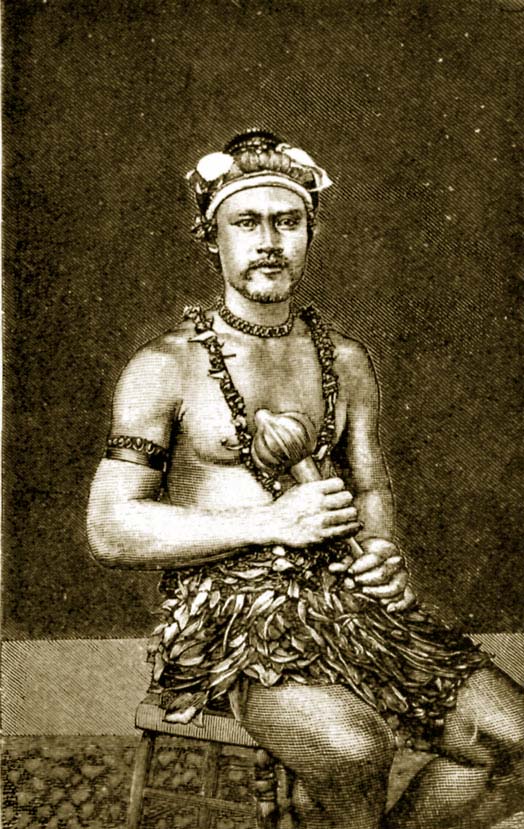Pili – 850 to 950 A.D.

Pili, the son of Tagaloa, was a strong, clever and skillful man. His influence and genealogy as a demi-God made him a very important person. He is remembered as the one who set up the districts and political boundaries of Upolu.
He married Sinaletava’e and she bore him five sons. The eastern end of the island of Upolu was named Atua and his clan was the oso (a stick used by farmers to plant taro). The western side of the island was called Aana and was named after his second son, Aana. The symbol given Aana was the spear and the war club, signifying that he and his clan were the warriors.
Since Tua and Saga were twins, he named the central part of the island Tuamasaga for these two sons. The symbols given them were the fue and the to’oto’o signifying that their clans would be the orators and the talking chiefs of Samoa.
His fifth son was Tolufale. He was appointed by his father to keep the peace among his brothers. His children are called “Aiga-i-le-tai”, which means children of the sea. Manono and Apolima, the two islands on the western end of Upolu were his districts. There was no symbol assigned to Tolufale but, since he was the keeper of the peace, it was suggested to the carver that the ietoga (fine mat) would be allocated to him because it was used as a peace offering to settle disputes in Samoa. In the aiga of Pili, he was given no symbol.
Soon after Pili had divided the land between his sons, each went to that part of Upolu or Manono that had been assigned them. For some years they lived in peace then they began to quarrel over the extent of their districts and a war broke out among the various members of the family. Atua and Aana fought against Tuamasaga and Tolufale. The war went on for several months. Neither party could win the final victory, so peace was finally made among the angry brothers. Whenever there is a quarrel among the family, it is referred to as the war among the brothers (taua o le au uso).
Pili was a very important character in Samoan mythology. He is also named in Hawaii. The Hawaiian legends tells us the Pili, a very high chief of Samoa, was persuaded by messengers from Paao to move to the islands of the north. Pili journeyed with what the legend called a “cloud of boats.” Thus was Pili set apart as King of Hawaii. From Hilo, King Pili went to the beautiful Waipio Valley taking Paao with him. Later he moved to the Kohala district. Here Paao built the Mookini temple, in a place to which chief families on Hawaii claim decent from Pili. King Kamehameha’s king line is traced back to Pili.
The above information was taken (as written) from the MCKAY-FALE located in Sauniatu (on the island of Upolu) Western Samoa.